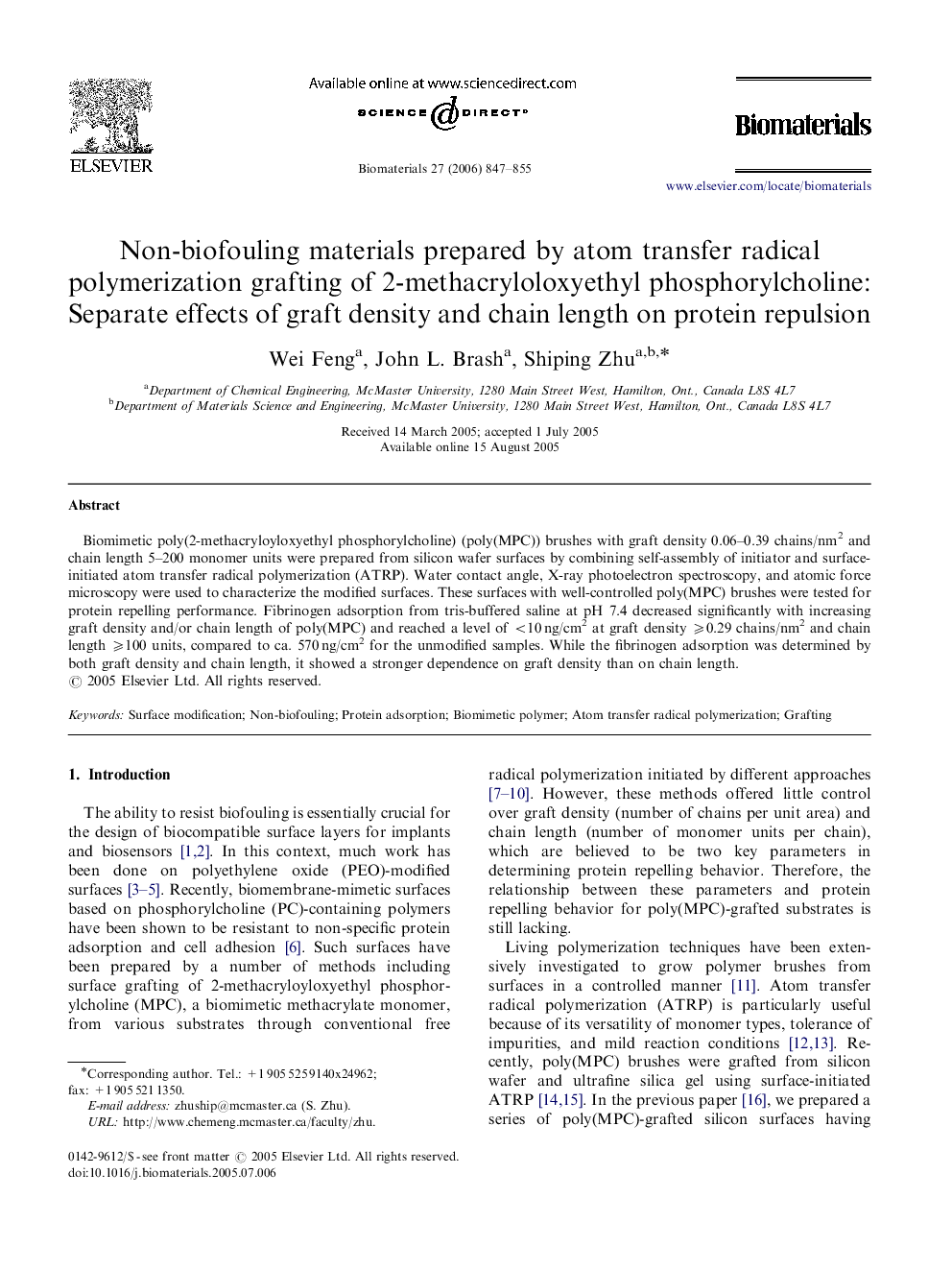| Article ID | Journal | Published Year | Pages | File Type |
|---|---|---|---|---|
| 11656 | Biomaterials | 2006 | 9 Pages |
Biomimetic poly(2-methacryloyloxyethyl phosphorylcholine) (poly(MPC)) brushes with graft density 0.06–0.39 chains/nm2 and chain length 5–200 monomer units were prepared from silicon wafer surfaces by combining self-assembly of initiator and surface-initiated atom transfer radical polymerization (ATRP). Water contact angle, X-ray photoelectron spectroscopy, and atomic force microscopy were used to characterize the modified surfaces. These surfaces with well-controlled poly(MPC) brushes were tested for protein repelling performance. Fibrinogen adsorption from tris-buffered saline at pH 7.4 decreased significantly with increasing graft density and/or chain length of poly(MPC) and reached a level of <10 ng/cm2 at graft density ⩾0.29 chains/nm2 and chain length ⩾100 units, compared to ca. 570 ng/cm2 for the unmodified samples. While the fibrinogen adsorption was determined by both graft density and chain length, it showed a stronger dependence on graft density than on chain length.
